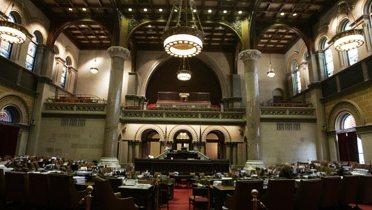On November 3, the day after the midterm elections, 37 “governors elect” will begin to organize or reorganize their governments. This year will bring added drama to what normally is a low-key exercise. With Washington mired in hyper-partisanship and the economic recovery sluggish, voters will look to governors to help boost job creation in the near term and retool their economies for the long haul. Those are high expectations particularly at a time when federal stimulus spending is waning, state deficits are large, and demands for budget cutting will be strong.
To govern for growth, these new (or re-elected) governors should use their initial decisions about government structure and staffing to help shape their vision for economic recovery, engage a broad group of stakeholders in driving that recovery, and bring focus and discipline to a myriad of state investments and policies.
In a constrained environment, governors will primarily need to marshal resources they already have by making sure that state efforts are coordinated, complementary, and clear to their targeted constituency: job creators.
Two early actions in particular could yield tangible benefits.
First, governors elect should consider creating a “Jobs Council,” composed of corporate, civic, university, and state and local leaders, to quickly develop a home grown vision for state growth. This vision must be empirically grounded in the assets and advantages of the state, particularly those economic clusters where the state is globally competitive. The vision should be cognizant of the state’s spatial geography, particularly the power and potential of the metropolitan areas that are the driving economic engines of virtually every state in the nation. To the greatest extent possible, the vision should be future oriented and attempt to align the state’s economic growth with where the economy is headed (e.g., driven by exports, powered by low carbon energy, fueled by innovation) rather than where it has been (e.g., distorted by debt and consumption). Ideally, a Jobs Council should be named before even formally taking office, so that they can “hit the ground running” with at least a preliminary plan for economic growth. The council could be co-chaired by the governor elect and a CEO of a major corporation in the state.
Virginia represents one model for emulation. In 2002, Gov. Mark Warner created an Economic Development Strategic Planning Council. The goal of the council, established by executive order in 2002, was to develop a four year economic development strategy. The Secretary of Commerce and Trade chaired the council. The council also included the heads of other major state agencies (e.g., Administration, Education, Health and Human Resources, Natural Resources, and Transportation) as well as representatives from business and local and regional economic development organizations.
Warner’s Council developed the “One Virginia-One Future” plan, which helped drive major efforts throughout his tenure, including efforts to strengthen public education, enhance the affordability of community colleges, improve worker training, expand access to broadband technology, and boost exports.
Second, governors should create a “Jobs Cabinet” within state government to coordinate state actions in the service of economic recovery and renewal. Ideally such a Jobs Cabinet could help deliver the vision developed by the Jobs Council described above. Most state governments are intensely fragmented. Responsibility for job creation is spread across a maze of bureaucratic silos and stove-pipes that include state departments of transportation, economic development, higher education, workforce, energy and agriculture. The result is uncoordinated actions with weak return on investment and often outright conflicting policy goals and means.
To bring order and coherence to bureaucratic chaos, governors elect should consider creating a super secretariat to oversee the key market shaping and job creating agencies.
Massachusetts pursued this path under Gov. Mitt Romney with regard to growth and development issues. In 2003, Romney created a Massachusetts Office of Commonwealth Development, with a “super secretary” responsible for overseeing energy, environmental, housing and transportation agencies and programs.
Given the stature of the new position, Romney was able to attract Doug Foy, a well-respected environmental practitioner, to head the new office. Foy was able to drive coordinated actions across agency lines, developed a better system for funding municipal smart growth initiatives and produced a 20-year strategic transportation plan for Massachusetts.
Tennessee offers another model to consider. There, Gov. Phil Bredesen established a Jobs Cabinet by executive order upon assuming office in 2003 (see link). The executive order designates the commissioner of the Department of Economic and Community Development chair of the Jobs Cabinet. The cabinet includes commissioners from seven state departments as well as representatives from higher education (e.g., the president of the University of Tennessee) and business (e.g., the president of the Tennessee Chamber of Commerce and Industry). The cabinet recently received recognition for its work from the U.S. Chamber of Commerce.
More recent examples include the Colorado Jobs Cabinet established by Gov. Bill Ritter in 2008 and, on a more cluster-oriented level, the Massachusetts Advanced Manufacturing Initiative established by Gov. Deval Patrick in 2010.
As I have written elsewhere, the November elections could trigger a wave of state innovation. That innovation could start literally the day after the election as governors elect move from campaign to governance. Setting a broad-based strategy for growth through business led Jobs Councils and implementing tailored visions through focused Jobs Cabinets could be the vanguard of state innovation.






Commentary
Governing for Growth
September 28, 2010